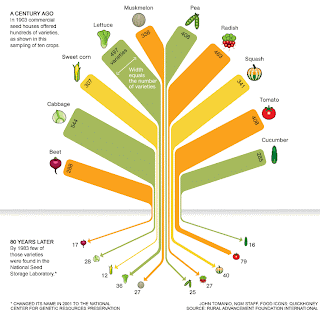I first discovered the lovely and fragrant sweet pea in 2009 while visiting gardens on the Clairemont Garden Tour. At that time, it was early May and far too late to start these vining flowers from seeds or seedlings. If you would like to enjoy these blooms by spring, now is the time to get to work!
I recommend purchasing your first batch of sweet peas as seedlings from your local nursery, however, if none are available, try your hand at starting from seed. I started my first batch from seedlings in late autumn of 2009 and had beautiful blooms by February. Make sure to read your labels, some varieties are for early bloom in December, while later flowering varieties will bloom in early spring and continue blooming through June.
Firstly, plant seeds or seedlings in full sun in rich soil amended with compost and low-nitrogen fertilizer. If you are in a colder climate, plant after the last frost. (In coastal Southern California, the frosts are not severe enough to damage the sweet peas.) If planting from seed, place each seed one inch deep in the ground and space them six inches apart. Plan to water seeds and seedlings 2 – 3 times a week depending on rainfall. The vines will need strong support, so make sure to place a trellis near your seeds. I like to re-purpose, so I use old tomato cages. Other gardeners use bamboo trellises or wire screens. Sweet peas will climb ugly chain-link fences, giving a romantic feel to an unattractive barrier.
 |
| The 2011 crop begins to climb its trellis. |
Multiple vines will eventually emerge from the point of origin. I like to thin out the vines and train them up their trellises using natural (non-synthetic) string. Thinning helps keep the sweet peas from becoming overgrown and allows air flow in between the vines, helping to prevent mildew growth. Pinch the tips of the vine to encourage branching; this will produce more branching vines and more blooms. Pick flowers frequently as this will encourage the plant to produce more blooms.
Keep in mind that sweet peas are unruly and prolific; they are more at home in romantic and wild gardens than in strictly regimented ones. I trim them back to keep them out of the roses, but otherwise I let them go crazy with color and fragrance. They can get up to 6 feet tall, sometimes higher. I top them off at a little over 5 feet (my own height). When the vines begin to look crispy and the blooms spent (late May to early June), I collect the seed pods, shell the seeds, and save them for the following year. I find my saved seeds to be hardier than the store-bought ones. After all, the parents survived my garden in such a beautiful fashion that their decedents deserve a chance to grow.
 |
| The 2010 crop looked like a Monet canvas! |
 |
| Detail of the 2010 crop - the white, pink and purple flowers came first. These red blooms were an end of season burst! |
 |
| The 2011 crop was more pinks and purples - it is a roll of the dice when collecting seeds because the blooms are gone. |
 |
| The 2012 crop - I purchased these as seedlings. Notice the string securing the vines to the trellis. |
 |
| 2012 crop again - these were started from seed I collected in 2010. |































